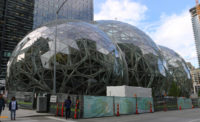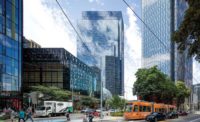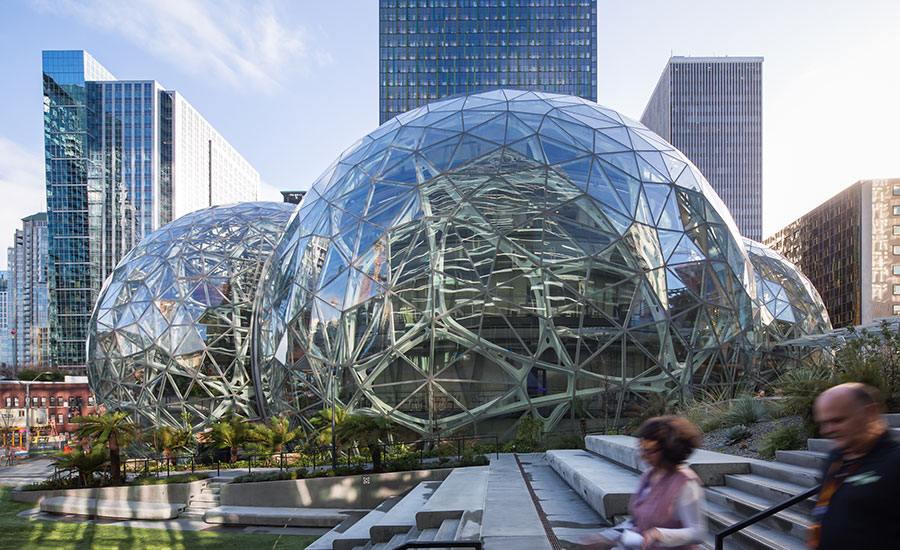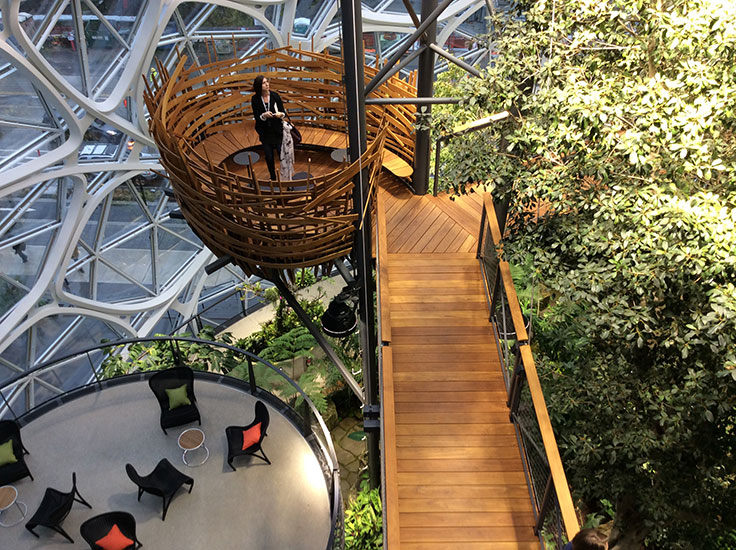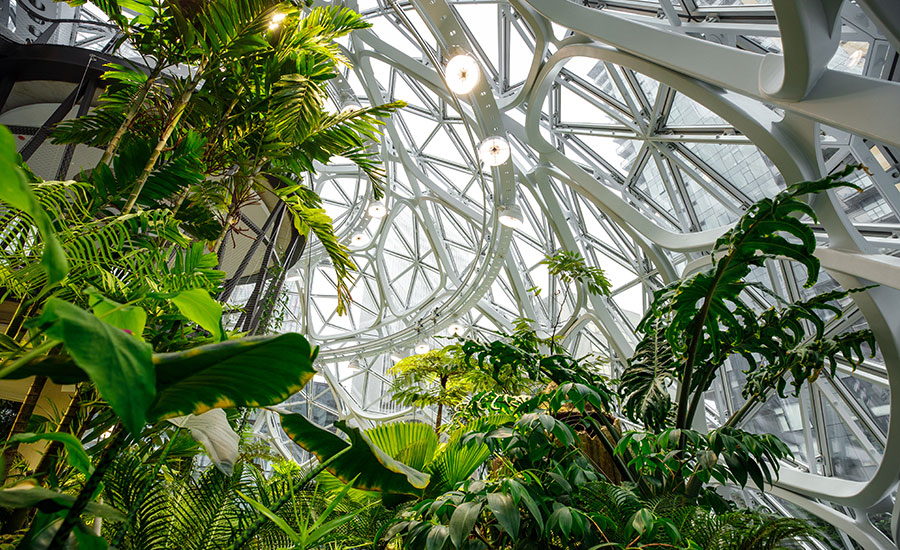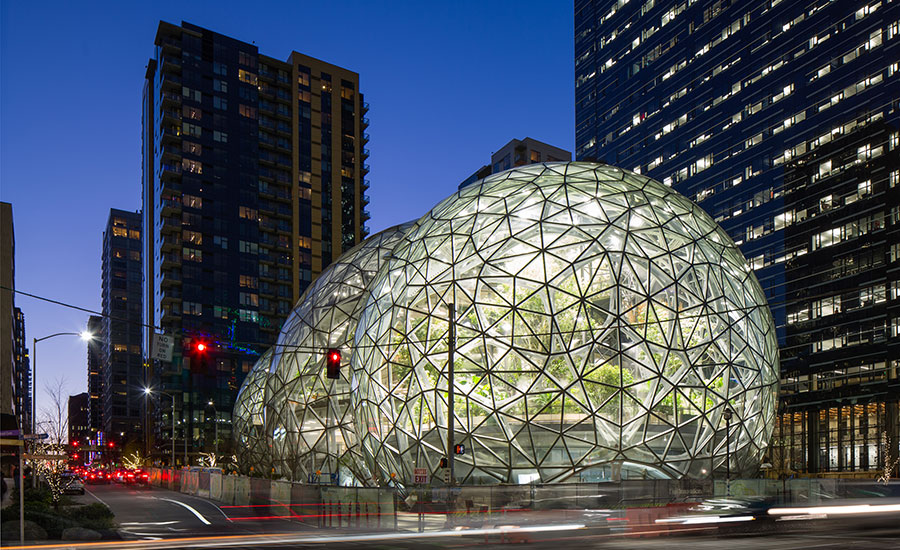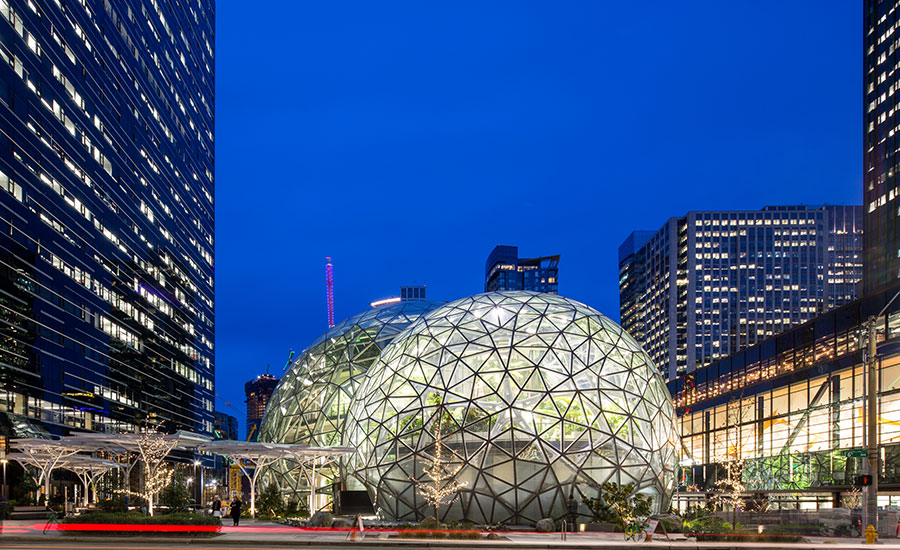Amazon Spheres by NBBJ Open in Seattle

Photo © Sean Airhart/NBBJ

Photo © Sean Airhart/NBBJ

Photo © Katharine Logan

Photo © Katharine Logan

Photo courtesy Amazon

Photo courtesy Amazon

Photo courtesy Amazon

Photo © Katharine Logan

Photo © Sean Airhart/NBBJ

Photo © Sean Airhart/NBBJ










Architects & Firms
The latest addition to Amazon’s $4 billion Seattle headquarters opened to employees this week. The Spheres, three conjoined glass bubbles that seem to have alighted among the downtown office towers, provide the company’s employees with their very own cloud forest. Five levels of unorthodox workspaces—from a tree house meeting room, complete with bouncy bridge, to deck chair recliners that imply their own pool—climb through a lush green habitat of more than 40,000 plants, including two densely verdant living walls, a forty-foot-high Australian tree fern, and an 18-ton ficus named Rubi.

Driving the design was the desire to create an entirely unique work space, said Seattle-based NBBJ principal Dale Alberda in an interview with RECORD at the building’s opening, “one that combines a rich natural environment with comfortable human-centric functionality.” Drawing on recent studies suggesting brains light up in nature, the design team sought “to create a hybrid environment that inspires productivity and collaboration,” said Alberda.
Creating that hybrid required the team to rethink the office building from first principles. Where business-as-usual would maximize floor area, plants need volume, hence the spheres—although the efficient enclosure of volume isn’t the only reason for the building’s form. “A sphere is one of the few elementary forms that you see in nature,” John Savo, lead architect in NBBJ’s commercial and corporate practice, told RECORD. “The sun, the moon, the human eye—there’s a power to that spherical form.” With three spheres, added Alberda, the form becomes iconic, also a project goal.
Unlike a geodesic dome, the repeating element of The Spheres’ structure is hard to spot unless you know the trick. The module consists of an irregular pentagon defined by the points of five welded arches. The arches form a stick figure that’s a bit like Da Vinci’s Vitruvian Man, but with a very long neck. Sixty of these modules form a pentagonal hexecontahedron: for glass and steel, spheres don’t get much closer than that.
As the pentagonal figures rotate across the surface of the spheres—the largest of which is over 90 feet high and 130 feet in diameter—they form apparently organic shapes that complement the branching and twining of the vegetation inside. They also achieve a stiffness that the project’s structural consultant, Seattle-based Magnusson Klemencic Associates, expects will perform nicely.

Structural model, photo © Katharine Logan
Steel components were pre-fabricated to tolerances of 1/32 of an inch, and welded together on site (except for one bolted section, a lid on the east sphere that enabled Rubi to be lowered into place). The Spheres are clad in laminated glass, extra-clear (low-iron) to admit the light plants need, and coated to mitigate heat gains.
Not all plants thrive at the temperature and humidity levels office workers prefer, however, so many of The Spheres’ more than 400 species have been selected from cloud forests, high-elevation tropical ecosystems that depend on cool, humid conditions. Even so, some accommodations have had to be made. The building operates on a diurnal cycle, with daytime temperatures averaging around 72 degrees with 60 percent humidity, and night-time temperatures around 55 degrees with 85 percent humidity. When the doors open in the morning, a fog of warm, moist air billows out. Here and there a drop of condensation falls. For visitors arriving at the opening, it feels like we’ve just missed the botanical version of Night at the Museum.
The plants are thriving, according to a member of the horticultural team that will provide for their on-going care. The ficus, for example, has grown two feet since it moved in. Now that the building is open to people, time will tell if they too will flourish in this biophilic new workplace, with its varied and intriguing spaces, and whether Amazon will see benefits in enhanced collaboration, creativity, and employee well-being. “If that plays through,” says Alberda, “that will be the building’s most significant achievement.”
For more on The Spheres, see this slideshow of construction photos.

